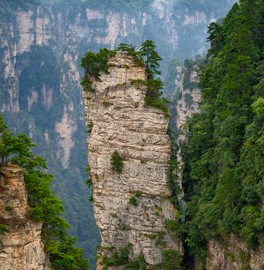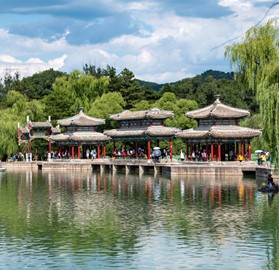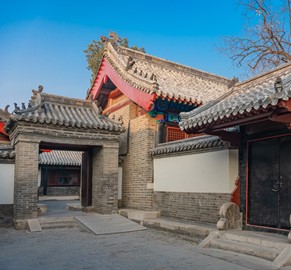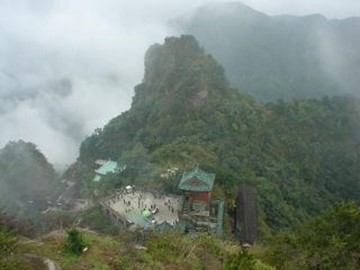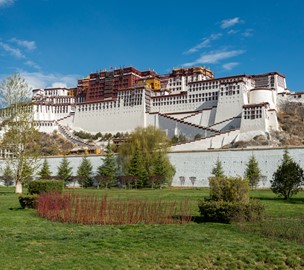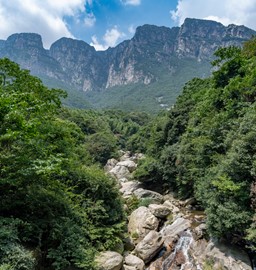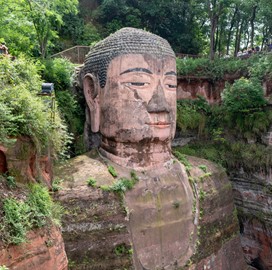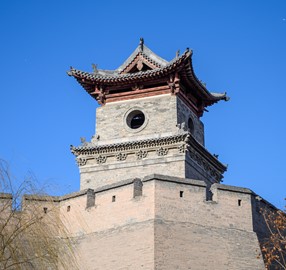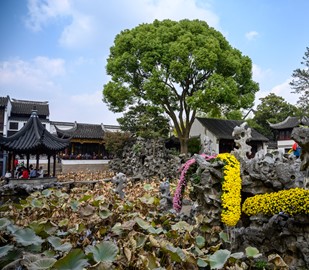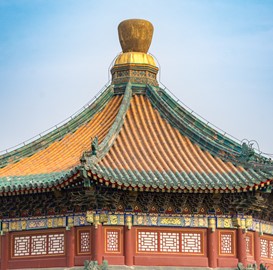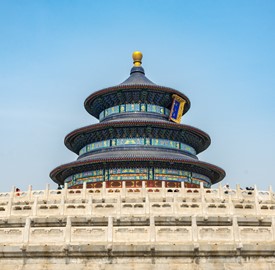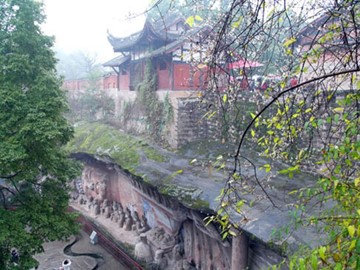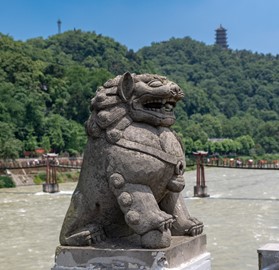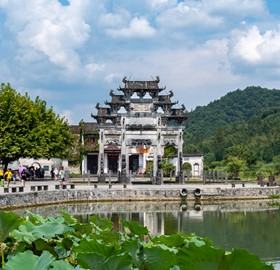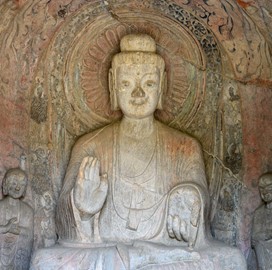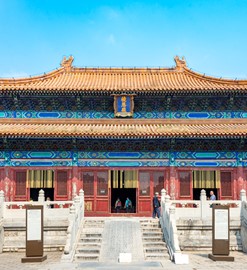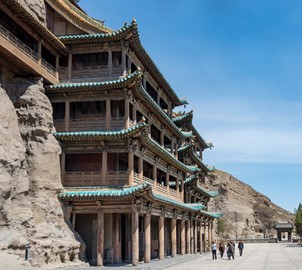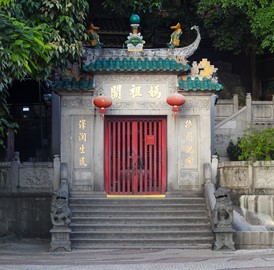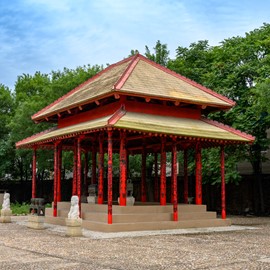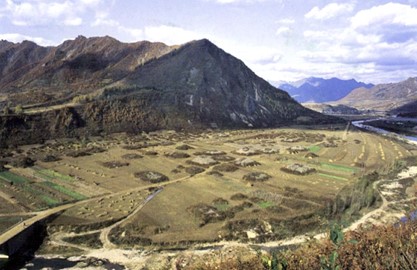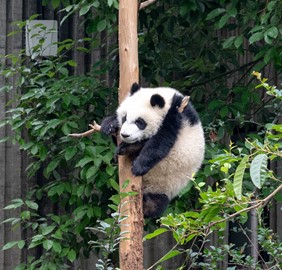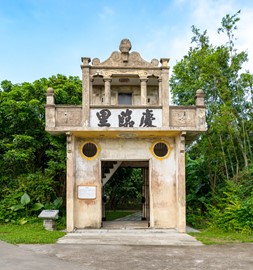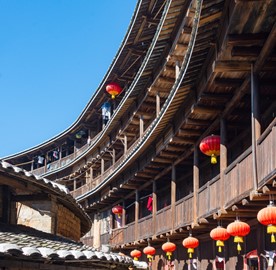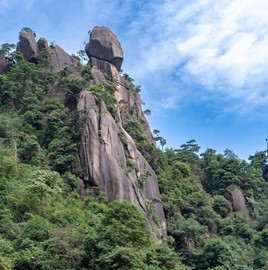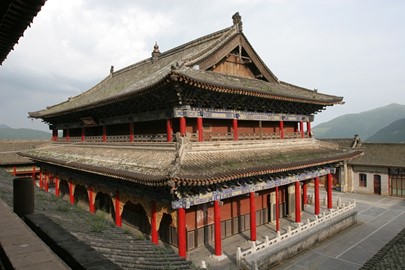region :: asia and the pacific
Wulingyuan
Wulingyuan, a UNESCO World Heritage site in China, is renowned for its breathtaking natural beauty, featuring over 3,000 quartzite sandstone pillars and peaks, many rising dramatically above lush valleys and streams. This geological wonder, formed over millions of years, includes misty cliffs, deep ravines, and cascading waterfalls, complemented by diverse flora and fauna. Its unique landscape has inspired cultural works, including traditional Chinese art and modern films, making it a globally celebrated de... Read More
Mountain Resort, Chengde
The Mountain Resort, a UNESCO World Heritage site in China, is a remarkable imperial retreat known for its harmonious blend of natural landscapes and traditional architecture. Constructed as a summer escape for Qing dynasty emperors, it features elegant palaces, pavilions, and temples set amidst rolling hills, serene lakes, and manicured gardens. This expansive complex showcases intricate design and cultural significance, reflecting the grandeur and sophistication of imperial China while offering a tranquil... Read More
Temple of Confucius in Qufu
The Temple of Confucius, a UNESCO World Heritage site in China, is a historic complex dedicated to the revered philosopher Confucius, embodying centuries of cultural and spiritual significance. Originally built in 478 BCE and expanded over time, it features grand halls, ancient steles, and ornate courtyards that reflect traditional Chinese architectural mastery. As a center for Confucian worship and education, it preserves rituals, artifacts, and teachings, drawing scholars and visitors to honor one of hist... Read More
Wudang Mountains
The Wudang Mountains, a UNESCO World Heritage site in China, are a sacred range celebrated for their Taoist heritage and stunning natural beauty. Home to ancient temples, monasteries, and palaces perched atop rugged peaks, the site reflects centuries of spiritual practice and architectural ingenuity. Renowned as the birthplace of Tai Chi, its misty slopes and lush forests create a serene backdrop, attracting pilgrims and martial arts enthusiasts alike to this harmonious blend of culture and nature.
Potala Palace
The Potala Palace, a UNESCO World Heritage site in China, is an iconic fortress and former residence of the Dalai Lamas, symbolizing Tibetan Buddhism’s rich history. Perched atop a hill, this architectural marvel features towering white and red walls, intricate murals, and sacred chapels filled with ancient relics. Built in the 7th century and expanded over time, it blends spiritual significance with stunning design, offering a glimpse into centuries of cultural and political heritage.
Mount Lushan
Lushan National Park, a UNESCO World Heritage site in China, is a scenic retreat famed for its lush mountains, misty peaks, and cascading waterfalls. A historic summer haven for scholars and elites, it features ancient villas, temples, and poetic landscapes that inspired centuries of Chinese literature and art. Its unique blend of natural splendor and cultural legacy makes it a cherished destination for reflection and exploration.
Mount Emei
The Mount Emei Scenic Area, a UNESCO World Heritage site in China, is a sacred Buddhist mountain renowned for its towering peaks, ancient temples, and diverse ecosystems. Crowned by the Golden Summit, it offers breathtaking views and spiritual significance, drawing pilgrims to its historic monasteries. With lush forests, rare wildlife, and misty trails, this natural and cultural treasure exemplifies harmony between humanity and nature.
Ping Yao
The Ancient City of Ping Yao, a UNESCO World Heritage site in China, is a well-preserved walled city showcasing Ming and Qing dynasty architecture. Its cobblestone streets, traditional courtyard homes, and towering city walls reflect a thriving historical trading hub once central to China’s economy. With ancient banks, shops, and temples still intact, it offers a vivid snapshot of imperial urban life and cultural heritage.
Classical Gardens of Suzhou
The Classical Gardens of Suzhou, a UNESCO World Heritage site in China, are masterpieces of traditional Chinese landscaping, blending art, nature, and architecture. Designed by scholars centuries ago, these serene gardens feature elegant pavilions, winding paths, and tranquil ponds adorned with rockeries and ancient trees. Reflecting philosophical ideals of harmony, they offer a timeless escape and a window into China’s refined cultural past.
Summer Palace
The Summer Palace, a UNESCO World Heritage site in China, is a majestic imperial retreat renowned for its sprawling gardens, serene lake, and ornate architecture. Built as a summer escape for Qing dynasty emperors, it features grand palaces, temples, and a iconic marble boat, harmonizing natural beauty with human craftsmanship. This historic site exemplifies traditional Chinese aesthetics and offers a glimpse into royal leisure and legacy.
Temple of Heaven
The Temple of Heaven, a UNESCO World Heritage site in China, is a stunning architectural complex where Ming and Qing emperors prayed for bountiful harvests. Its centerpiece, the circular Hall of Prayer for Good Harvests, features intricate wooden design and vibrant colors, symbolizing the connection between heaven and earth. Set within a tranquil park, this sacred site reflects ancient Chinese cosmology and imperial reverence for nature’s cycles.
Dazu Rock Carvings
The Dazu Rock Carvings, a UNESCO World Heritage site in China, are a remarkable collection of ancient stone sculptures etched into cliffs, blending Buddhist, Taoist, and Confucian themes. Created between the 9th and 13th centuries, these intricate reliefs depict deities, historical figures, and daily life with exceptional artistry. Preserved in their natural setting, they offer a profound glimpse into China’s spiritual and cultural evolution.
Mount Qingcheng and the Dujiangyan
Mount Qingcheng and the Dujiangyan, a UNESCO World Heritage site in China, combine a sacred Taoist mountain with an ancient irrigation marvel. Mount Qingcheng’s lush peaks host historic temples, reflecting its status as a cradle of Taoism, while the Dujiangyan system, built over 2,000 years ago, showcases ingenious engineering that tamed floods and irrigated fields. Together, they represent a harmonious blend of nature, spirituality, and human innovation.
Xidi and Hongcun
Xidi and Hongcun, a UNESCO World Heritage site in China, are ancient villages renowned for their well-preserved Ming and Qing dynasty architecture. Featuring narrow lanes, whitewashed walls, and ornate wooden carvings, these settlements reflect the prosperity of merchant families. With serene ponds and surrounding hills, they offer a picturesque window into traditional Chinese rural life and cultural heritage.
Longmen Grottoes
The Longmen Grottoes, a UNESCO World Heritage site in China, are an extraordinary collection of Buddhist rock carvings etched into cliffs along a riverbank. Created between the 5th and 10th centuries, these thousands of statues and caves showcase intricate sculptures of deities and emperors, reflecting the peak of ancient Chinese artistry. This sacred site offers a profound testament to Buddhist devotion and cultural achievement.
Imperial Tombs
The Imperial Tombs of the Ming and Qing Dynasties, a UNESCO World Heritage site in China, are a collection of grand mausoleums honoring emperors of two dynasties. Featuring elaborate stone pathways, ornate statues, and majestic halls, these sites blend feng shui principles with stunning architecture. Set amidst serene landscapes, they reflect imperial reverence for ancestry and the afterlife, preserving centuries of royal legacy.
Yungang Grottoes
The Yungang Grottoes, a UNESCO World Heritage site in China, are a magnificent series of 5th-century Buddhist cave temples carved into sandstone cliffs. Housing over 50,000 statues, from towering Buddhas to intricate reliefs, they showcase early Chinese rock art and the spread of Buddhism. This ancient site blends artistic mastery with spiritual significance, offering a striking testament to cultural heritage.
Macau
The Historic Centre of Macau, a UNESCO World Heritage site in China, is a vibrant fusion of Chinese and Portuguese colonial heritage. Featuring cobblestone streets, baroque churches, and traditional temples, it reflects centuries of cultural exchange as a trading hub. Iconic landmarks like fortress ruins and pastel-colored buildings highlight its unique East-meets-West identity, preserving a rich historical tapestry.
Yin Xu
Yin Xu, a UNESCO World Heritage site in China, is an ancient archaeological site revealing the ruins of a late Shang dynasty capital from over 3,000 years ago. Excavations uncovered royal tombs, palace foundations, and oracle bone inscriptions, the earliest known Chinese writing. This remarkable site offers critical insights into early Chinese civilization, urban planning, and bronze-age culture.
Koguryo Kingdom
The Koguryo Kingdom, a UNESCO World Heritage site in China, preserves remnants of an ancient Northeast Asian civilization from the 1st century BCE to 7th century CE. Its fortified cities, elaborate tombs, and vibrant murals showcase advanced architecture and artistry, reflecting the kingdom’s power and cultural sophistication. This site offers a rare glimpse into a pivotal era of regional history and heritage.
Sichuan Giant Panda
The Sichuan Giant Panda site, a UNESCO World Heritage site in China, is a vital conservation area protecting the iconic giant panda and its bamboo-rich habitat. Spanning lush forests and rugged mountains, it supports a diverse ecosystem with rare species like the red panda and snow leopard. This natural sanctuary highlights global efforts to preserve biodiversity and the beloved panda’s cultural significance.
Kaiping Diaolou
The Kaiping Diaolou, a UNESCO World Heritage site in China, are unique multi-story watchtowers blending Chinese and Western architectural styles from the late 19th and early 20th centuries. Built by overseas Chinese as homes and defenses against bandits, these fortified structures feature ornate designs and robust construction. Set amidst rural landscapes, they reflect a fascinating fusion of cultures and historical resilience.
Fujian Tulou
The Fujian Tulou, a UNESCO World Heritage site in China, are distinctive earthen fortresses built by the Hakka people between the 12th and 20th centuries. These circular or rectangular structures, designed for communal living and defense, feature thick mud walls and intricate wooden interiors. Nestled in scenic valleys, they showcase ingenious engineering and a unique cultural tradition of harmony and resilience.
Mount Sanqingshan
Mount Sanqingshan, a UNESCO World Heritage site in China, is a sacred Taoist mountain renowned for its dramatic granite peaks, twisted pines, and misty landscapes. Home to ancient temples and diverse flora and fauna, it blends natural splendor with spiritual significance. Its striking geological formations and serene beauty make it a revered destination for pilgrims and nature enthusiasts alike.
Mount Wutai
With its five flat peaks, Mount Wutai, a UNESCO World Heritage site in China, is a revered Buddhist mountain known for its five flat peaks and ancient monasteries. A spiritual center since the 1st century, it houses ornate temples with intricate statues and relics, set against a backdrop of rugged landscapes. This sacred site draws pilgrims and visitors seeking its profound cultural and natural harmony.
